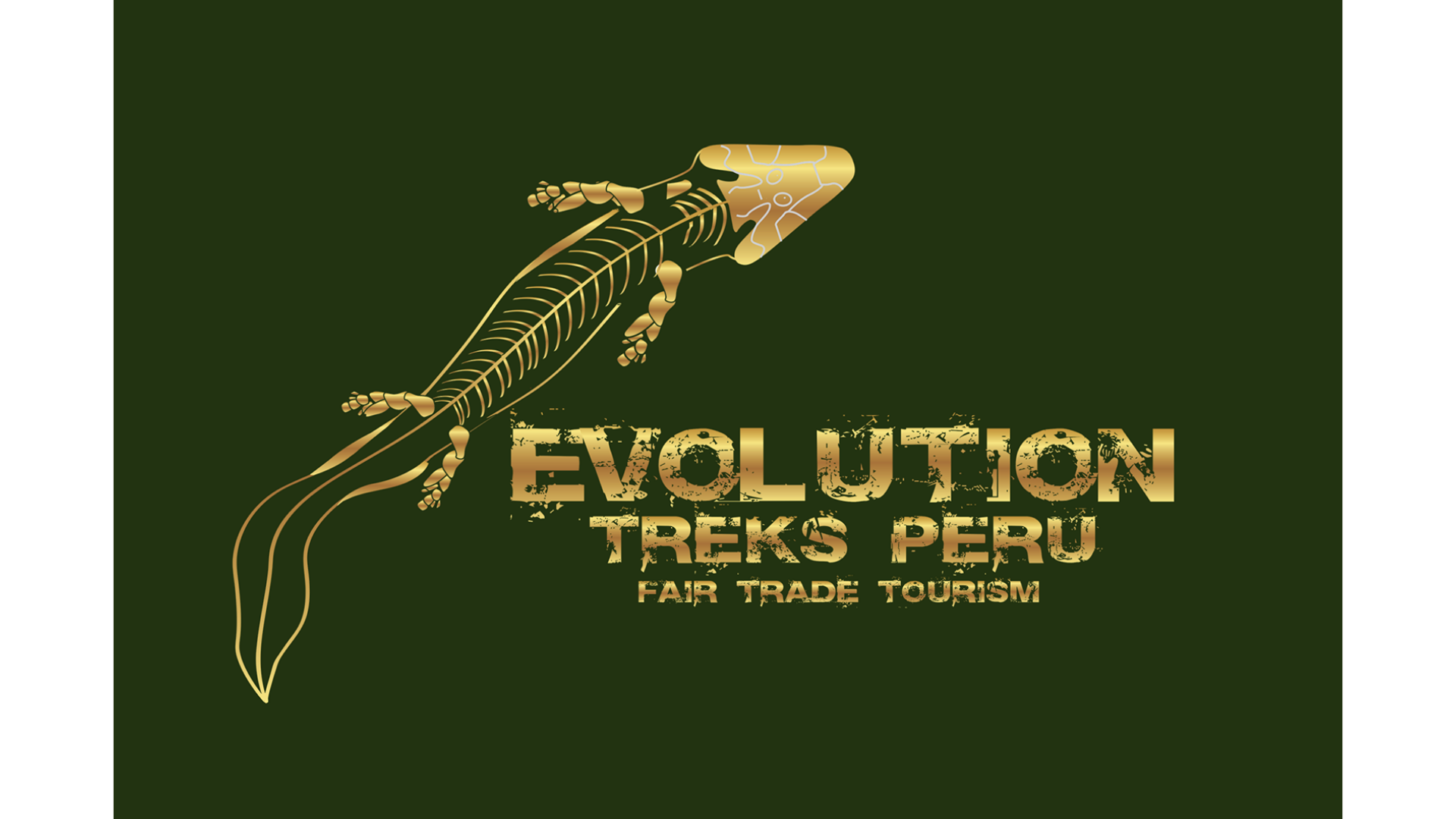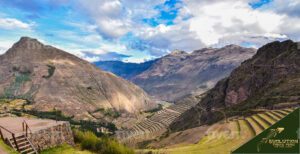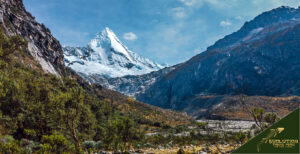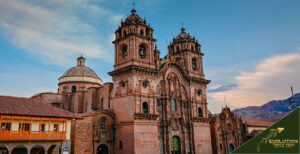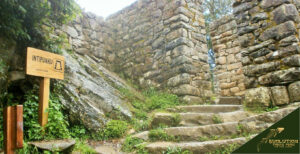The Norte Chico civilization (also known as Caral or Caral-Supe) was a complex pre-Columbian society that included up to thirty major population centers in the Norte Chico region of the north-central coast of Peru.
It is the oldest known civilization in the Americas, having flourished between the 30th century B.C. and the 18th century B.C. The alternative name, Caral-Supe, is derived from Caral in the Supe Valley, a large and well-studied site in the Peruvian Norte Chico. The complex society of Caral arose just a millennium after Sumer, was contemporary with the pyramids of ancient Egypt, and preceded the Mesoamerican Olmecs by nearly two millennia.
The Norte Chico is a preceramic culture of the pre-Columbian Late Archaic; it was completely devoid of ceramics and art. The most impressive achievement of this civilization was its monumental architecture, including large platform mounds and sunken circular plazas.
Archaeological evidence suggests the use of textile technology and, possibly, the worship of common divine symbols, both of which recurred in pre-Columbian Andean cultures. It is assumed that sophisticated governance was required to manage the ancient Norte Chico, and questions remain about its organization, particularly the impact of food resources on policy.
Scholars have defined Caral as a city due to its organization, extension, and diversity of buildings. Indeed, it consists of diverse monumental buildings with different ceremonial and administrative functions, and where important architectural and technological innovations were developed. Chronologically, it is the oldest settlement in America with these characteristics, so it is considered the first city in America.
It has also been called Sacred City since everything excavated in the city is impregnated with religiosity. There are many bonfires for offerings, as well as signs of possible rituals in each place, not only in the areas of public space or in the temples but even in the dwellings.
In the hearths, food or other objects would be burned as offerings. All of this indicates that it was then that Peruvian societies had a central government for the first time, where the State was established, and religion was used as a means of affirmation.
Caral occupies an area of 66 hectares, divided into two zones, one central and the other peripheral.
The central or nuclear zone is the sector where 32 public structures and several residential complexes are distributed in two halves:
The upper half (Caral Alto), to the north, has the most significant public and residential constructions in the city: seven monumental buildings (pyramids), two sunken circular plazas (in front of two pyramids), two spaces for the collective congregation (Central Plaza and Plazuela de la Huanca), residential units for officials, as well as an extensive residential complex for specialists and servants.
The lower half (Caral Bajo), to the south, has smaller buildings, such as the architectural complex of the Amphitheater, the Circular Altar building, and a residential complex, also smaller.
The peripheral or marginal zone contains groups of houses distributed in the form of islets bordering the valley.
It should be noted that the residential buildings were not only domestic dwellings but also workshops.
Caral is the most imposing of all the urban settlements in the lower middle Supe valley. There are eight settlements in total: Pueblo Nuevo, Cerro Colorado, Allpacoto, and Llapta (on the right bank) and Lurihuasi, Miraya, Chupacigarro, and Caral itself (on the left bank).
The configuration of the mountain range encloses the area: to the west, the hills on both sides of the valley are closed, forming a gorge; the same happens to the east. In total, there are 10 km long that conform to a section of a fertile valley, well defined and of easy control.
If we talk about the entire geographic space of the Supe valley (coastal area and middle and lower valley), there are a total of 20 settlements. Still, those that show greater extension, complexity, and architectural monumentality are the eight mentioned above. Caral stands out clearly, which undoubtedly would have had a preeminent rank among them.
The geological units exposed in the area are mainly made up of intrusive rocks of the Batolito de la Costa and volcanic rocks of the Casma Group, both of the Cretaceous age. Quaternary deposits have developed over the rocks, including fluvial, alluvial, lacustrine, and eolian deposits.
It has been suggested that Caral was the seat of a community formed by several ayllus or groups of families and directed by the leaders of these ayllus, one of which would be the “principal” (Curaca) and the others their counterparts.
The main chiefs or curacas would be in charge of directing the inhabitants. This system of government would have also existed in other settlements located in the Supe valley and in other centers located in more distant regions, such as Las Haldas and Sechín Bajo (Casma valley), Kotosh (Huallaga basin), Huaricoto and La Galgada (Ancash highlands).
They all shared the same tradition and formed a vast and well-organized network of reciprocity and exchange. This entire area, located in the north-central part of present-day Peru, was the site where the Andean civilization was forged.
Due to its extension and enormous complexity, Caral must have been undoubtedly the head of the entire network of towns in the Supe valley.
What held the Caral population together was presumably religion, which would be the means of social cohesion and coercion. Religion would be the conduit through which the State controlled the population, goods production, and circulation.
This is inferred from the presence of large religious monuments (pyramids or temples) with their plazas, atriums, and sacred fire altars or hearths, where the various festivities of the ceremonial calendar were held, a symbol of their cultural identity. Periodic meetings and joint activities, such as the renovation of the pyramids allowed the recognition of the power and strengthened cultural identity.
In short, Caral is considered the cradle of the Andean civilization since the oldest exponents of the main institutions of the pre-Hispanic era have been detected there, such as reciprocity (system of exchange and circulation of goods and services), the ceremonial calendar (related to the celebration of festivities and other economic activities) or the construction and renovation of temples, among the most relevant.
As a result of the investigations of the archaeological remains, it was concluded that Caral was the economic capital of a large region thanks to its agricultural work, whose products were exchanged with fishermen from the coast or other populations. This is understood by the abundance of remains of marine products in Caral, which is about 20 km away from the nearest coast.
The regional domination by Caral, given the studies, was exercised in an entirely peaceful way during a period that could be 500 to 1000 years, during which Caral left no remains of weapons manufacture, testimonies, or evidence of having organized an army or led a war on record. This possibility has surprised researchers from various fields who were interested in Caral.
Everything indicates that around 1800 B.C., all the Caral culture settlements in the Supe valley were abandoned. The exact reasons are unknown, but it is presumed that it was a consequence of natural events, such as earthquakes and the El Niño phenomenon, which forced the inhabitants to migrate to other places.
Signs of intense seismic activity have been found in several monumental temples, such as the Huaca de Sacrificios de Áspero and the Templo Piramidal Mayor de Caral. They show large cracks and unevenness between floors that were later covered by new constructions. These earthquakes must have had a magnitude of 7 to 8 on the Richter scale.
But possibly what affected the most was one or several catastrophic El Niño events, characterized by torrential rains and overflowing rivers, which would undoubtedly cause a great collapse in the agricultural economy, as the areas dedicated to cultivation would be converted into swamps and marshes; another consequence would be the sanding of the beaches. Also, the unusual winds caused by El Niño would cause great sand storms that would cover the cultivated fields of the Supe valley.
The settlers were thus forced to migrate to other places where they undoubtedly built new settlements and applied their technologies. Coincidentally, other temples and administrative centers arose around that time in the coastal valleys near Caral, as well as further north and in the highlands. Among them are Vichama (Végueta, Huaura), Sechín, La Galgada and Huaricoto (Ancash), and Kotosh (Huánuco). These centers demonstrate the continuity of the Andean civilization, whose original focus is undoubtedly Cara.
The Sacred City of Caral was declared a World Heritage Site by the UNESCO World Heritage Committee on June 28, 2009, in Seville, on the occasion of its thirty-third ordinary session. Its research and conservation have been carried out since 2007 by the Caral-Supe Special Archaeological Project, now Caral Archaeological Zone, directed by archaeologist Ruth Shady Solís.
Between January 2003 and June 2021, a total of 1’000,608 tourists visited the “Caral Civilization Route”, which includes the archeological sites of the Sacred City of Caral, Áspero, a fishing city, and Vichama, an agricultural and fishing city, located in the Supe and Huaura valleys.
The Sacred City of Caral was the archaeological site that received the most visits: 833,650 people.
You can get to Caral by car, public transportation, or through a travel agency. The agencies’ prices can vary from 400 soles to exclusive private tours, which are much more expensive. Caral Tours Travel is one of the most recognized companies in this area.
Home – Caral Tours Travel Service SAC – Incoming Tour Operator in Peru
In order to promote tourism in the Norte Chico region, the province of Barranca, the Peruvian Ministry of Transportation and Communications awarded it the international “SafeTravels” seal as a safe tourist destination for all travelers interested in visiting the Sacred City of Caral.
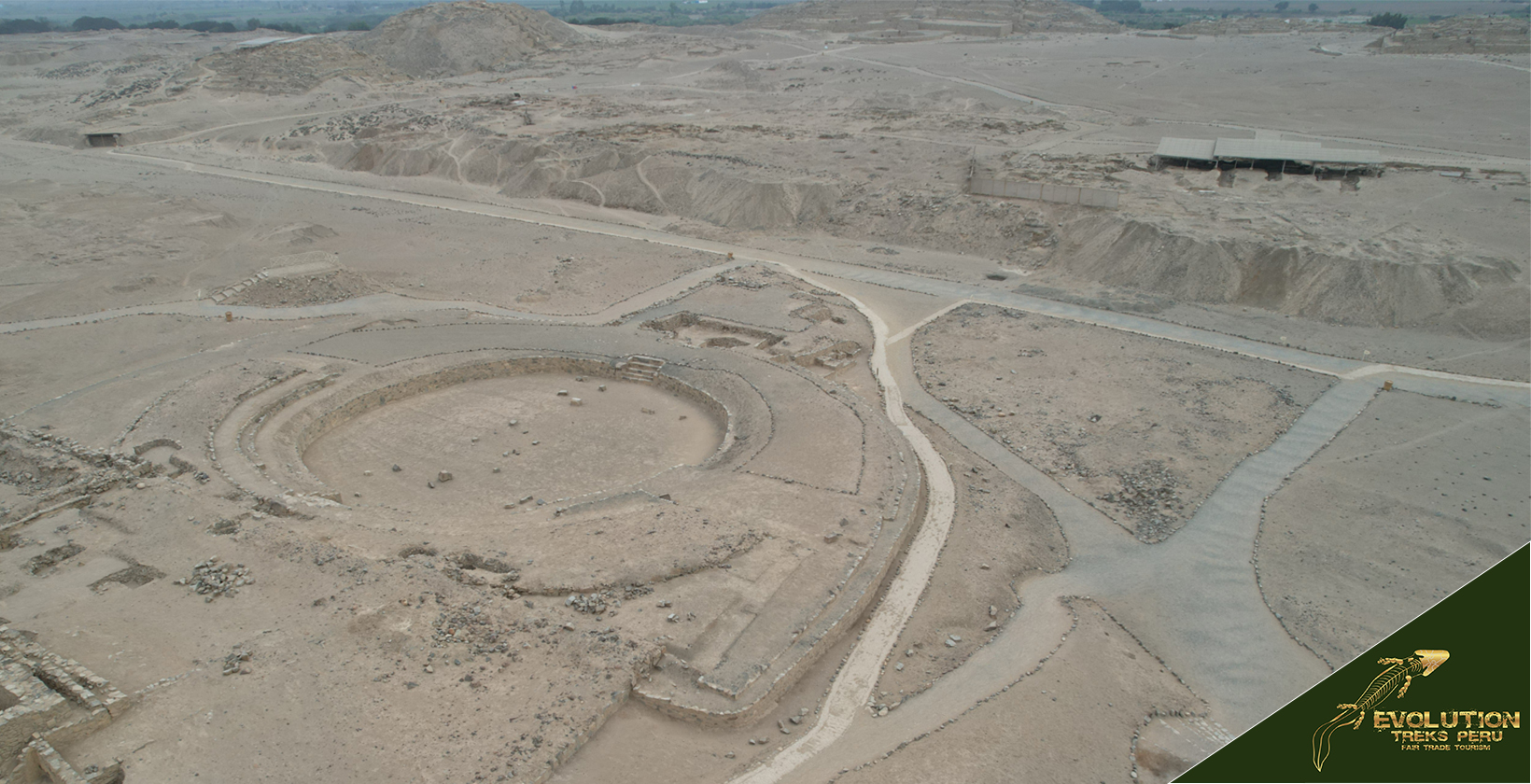
What is the history of the Sacred City of Caral?
To write about the history of the Sacred City of Caral, we must refer to the Norte Chico civilization (also known as Caral and also Caral-Supe). This was a pre-Columbian society located in what is now the Norte Chico region of the north-central coast of Peru, near Supe, province of Barranca, Peru (184 kilometers north of Lima).
Its location allowed it to take advantage of three rivers: the Fortaleza, the Pativilca, and the Supe. It has been established as the oldest known civilization in the Americas and as one of the six sites where civilization originated, separately, in the ancient world.
This complex society arose a millennium after Sumer in Mesopotamia, was contemporary with the Egyptian pyramids, and preceded the Mesoamerican Olmecs by almost two millennia.
Caral was discovered by Paul Kosok in 1948 and studied by archaeologist Ruth Shady. The urban complex of Caral occupies more than 150 acres and houses plazas, dwellings, and a temple 28 meters high. Andean civilizations used its urban plan for four thousand years. One of the artifacts found at Caral is a knotted textile piece called a quipu, which archaeologists believe was a method of record keeping.
Other pieces found are flutes made from condor and pelican bones. No evidence of warfare has been found. In 2000, Marco Machacuay and Rocio Aramburu discovered a geoglyph west of Caral. The lines of the engraving form a human face with long hair and an open mouth. It is believed that about 3,000 people lived in Caral at its peak.
The most impressive achievement of this civilization was its monumental architecture, which included large earthen platform mounds and sunken circular plazas. Archaeological evidence suggests the use of textile technology and, possibly, the worship of common god symbols, both of which recurred in pre-Columbian Andean cultures.
It is assumed that a sophisticated government was necessary to administer the ancient Norte Chico. Questions remain about its organization, particularly about the political influence of food resources.
Some scholars have suggested that the Norte Chico was based on marine and maritime resources, as opposed to the development of agricultural surpluses of cereals and crops, which have been considered essential for the rise of other ancient civilizations.
For more information about the Sacred City of Caral, you can consult the works of Ruth Shady Solis, “Caral – Supe. The oldest civilization of America” and “The Civilization of Caral – Supe: 5000 years of Cultural identity in Peru”. And, likewise: “Caral: the first civilization in America: the first civilization in the Americas.” By Ruth Shady and Christopher Kleihege.
What is the meaning of the Sacred City of Caral?
It is possible that Caral is a Quechua name. There is no agreement on its meaning, although some linguists have proposed that it means “fiber” or “reed”. Or, in any case, it would have been a proto-Quechua voice.
In the early years of the 21st century, the Huachan linguist Alfredo Torero pointed out that the Quechua language would have originated in the valleys of Supe, Fortaleza, and Pativilca. He made this statement after studying the three valleys’ toponymy (place names). Caral, the name of the population center near the archaeological site, is mentioned in the idolatry processes of the 17th century in Cajatambo.
Scholars have defined Caral as a city due to its organization, extension, and diversity of buildings. Indeed, it consists of a group of various monumental buildings with different ceremonial and administrative functions, and where important architectural and technological innovations were developed. Chronologically, it is the oldest settlement in America with these characteristics, so it is considered the first city in America.
It has also been called a sacred city since everything that has been excavated in the city is impregnated with religiosity. There are many bonfires for offerings, as well as signs of possible rituals in each place, not only in the areas of public space or in the temples but even in the dwellings.
Food or other objects would have been burned in the hearths as offerings. All of this indicates that it was at that time that Peruvian societies had a central government for the first time, where the State was established, and religion was used as a means of affirmation.
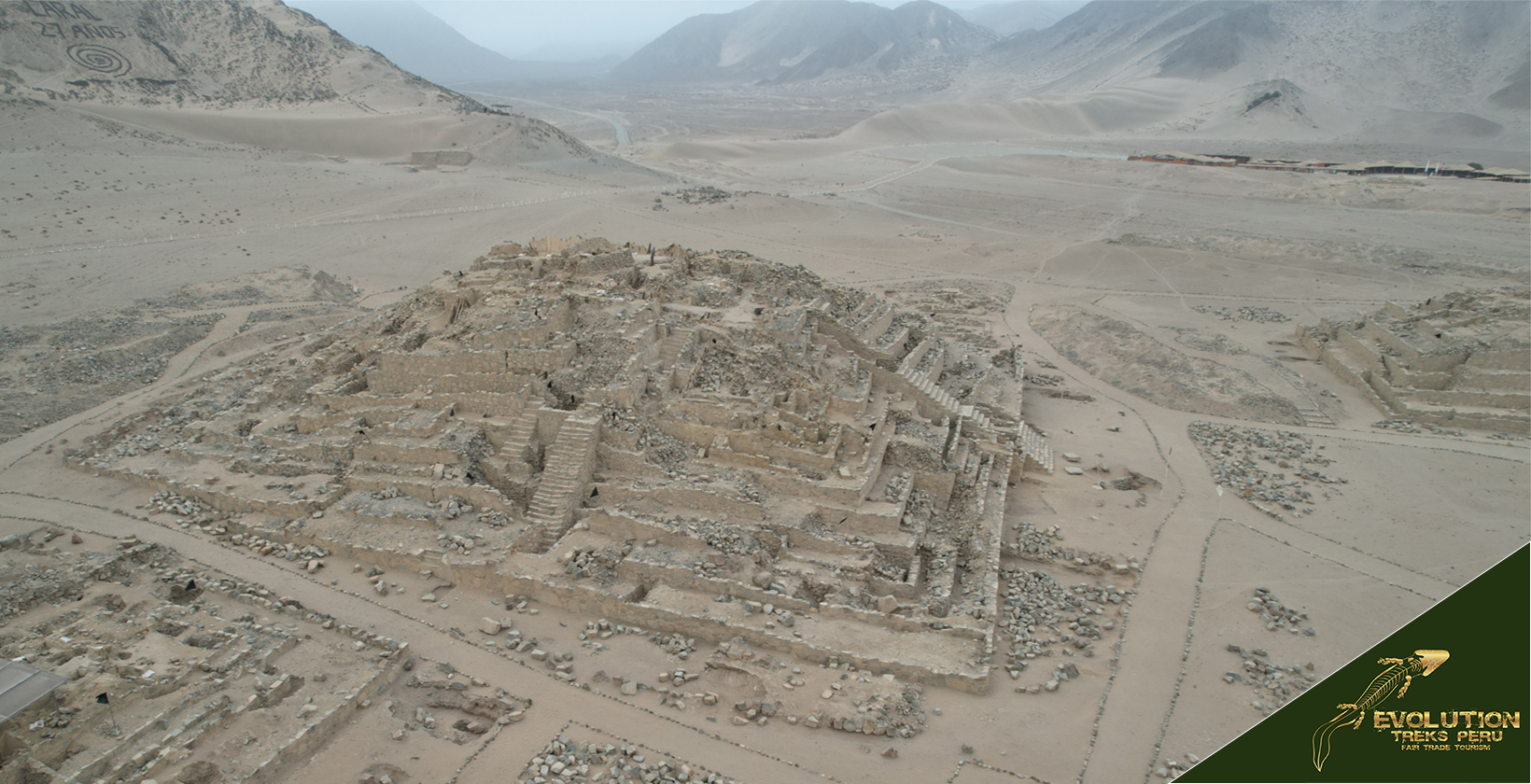
What is the architecture of the Sacred City of Caral like?
The Caral civilization was an important urban center full of monumental architecture. Its constructions were amazing, it had 6 pyramids, different religious and ceremonial temples, residences, and production workshops.
Caral presents a complex and monumental architecture, including six large pyramidal structures. A quipu (knot system used in Andean civilizations to record information) found at the site attests to the development and complexity of Caral society.
The plan of the city and some of its components, including the pyramidal structures and the residence of the elite, show clear evidence of ceremonial functions, signifying a powerful religious ideology.
In addition, it was divided into two main zones, the central and the peripheral, as well as Caral Alto and Caral Bajo. The pyramidal constructions were located in the upper zone, where the Great Pyramid stands out for its large dimensions (500 ft. x 360 ft. x 91 ft.). However, the temples were located in the lower part.
The most striking structures are the pyramids. There were of different sizes, and built with adobe, stone, logs, and mud. The colors used were white or light yellow and sometimes red.
The most notable, however, was the distribution of the building, which was ascended by a central staircase that led to several rooms. The central hearth of these buildings, where food was burned for rituals.
Talking about the periphery of the Sacred City, you should know that El Áspero was a significant architectural complex for Caral. It was near the mouth of the Supe River and provided fishing services to the entire community. A striking fact is that human sacrifices were made in its temples or huacas.
The Sacred City of Caral occupied 66 hectares, in which two zones were distinguished: one nuclear and the other marginal.
In the nuclear zone, the buildings are divided into two halves: the upper half, which has the largest public and residential buildings in the city: seven monumental buildings, two sunken circular plazas, two spaces for a collective congregation, residential units for officials; as well as an extensive residential group of specialists and servants.
The lower half has smaller buildings, such as the architectural complex of the Amphitheater, the Circular Altar building, and a residential complex, also smaller. The marginal zone, located in the periphery, contains residences grouped and distributed, like an archipelago, along the alluvial terrace that borders the valley.
Pyramidal houses and public buildings
It comprises a core zone with 32 public structures and several residential complexes and an area on the periphery, bordering the valley, where several housing complexes were built.
Urban planning and monumentality
The ancient settlers selected the desert lands of the valley for their urban settlements.
Evidence of ritual funerary activities has been found in some structures. The city would have been conceived as a calendar.
Each public building was built in relation to a particular deity and astral position. Multifunctional activities were carried out in them on specific festive dates of the annual calendar.
Pyramidal public buildings
Religion, an essential component of the pre-Hispanic cosmovision, is evident in constructing the pyramidal buildings. These have different sizes, and the ceremonial spaces are dominated by bonfires.
They were used for political, administrative and labor functions, combined with ceremonies and religious rites. These buildings also had symbolic functions, as they expressed content and served for cultural identification and social cohesion.
Observatory
It is located in the southeastern part of the city. Through the hills, a complex astronomical laboratory has been identified. Lines were drawn to mark horizons, geoglyphs and subway observatories were built, as well as a 12 m wide road.
Residences
There are houses attached to the monumental multifunctional buildings, which have fine finishes and ample spaces. In addition, three residential complexes or “neighborhoods” have been identified:
– The Conjunto Residencial Mayor, located in the upper half, in front of the Gran Plaza Central.
– The Conjunto Residencial Menor, located in the lower half, in front of several public buildings.
– The Periphery Residential Sector, located in the northwest of the city, bordering the valley.
Architectural components: core and peripheral areas
Pyramidal public buildings
In the Middle and Late periods, pyramidal buildings of various sizes were constructed with a particular stellar orientation. Each building was composed of a main body in the center of greater height and other lateral bodies or wings of descending height. The design of these buildings simulates the figure of a bird with outstretched wings.
- Main staircase.
It divides the Body and marks the axis that will organize the other building components. It shows two sections separated by a break.
- Anteroom.
It is located on the Platforms before the entrance to the ceremonial hall.
- Staggered platforms.
They give volume, shape, and height to the building; they are of different dimensions.
- Ceremonial Hall.
It is presided over by a central hearth and surrounded by a series of staggered platforms, like a grandstand. Restricted access environment. Intended for meetings of authorities. It is entered through an opening with a double jamb and cross or chacana design.
- Enclosure after the ceremonial hall
There is an Elevated platform with two enclosures, located on each side, following the central axis.
- Special enclosure
It symbolizes the authority of the director of the building, either to impose political decisions or to express religiosity.
- Other rooms at La Cima.
Built-in the highest part of the building, on elevated platforms, they show sidewalks, and in the Middle and Late periods, they were decorated with niches.
- Altar of Underground Conduits.
The Square floor plan has a fire pit and, ventilation ducts, and benches around the fire pit.
- Sunken Circular Plaza.
It is an excavated square built with circular platforms and access stairs located towards the central axis of the pyramidal building.
- Subway gallery.
- Residence.
Construction techniques:
The terraces had stone walls with clay mortar and pastillas or smaller stones and were filled with shicras with stones. Until the Middle Period, some public buildings maintained enclosures of sticks, reeds, and clay. In the Middle-Late Period the use of carved stone blocks became widespread. The walls were covered with clay plasters and white, light yellow, yellow ochre, red and black paint, according to the periods of construction of the city.
Homes
Several residential sectors have been identified in the city: multifunctional complexes and housing attached to pyramidal public buildings. Their characteristics are related to the social differences of their occupants.
Differentiated roots between households
– Location within the city
– Dimensions and number of rooms
– Construction techniques and materials
– Recovered cultural material
TYPICAL ARCHITECTURAL COMPONENTS
- Ceremonial hall with central fireplace.
- Annex precinct after the ceremonial hall.
- Lateral enclosures for domestic and productive activities.
- Complementary enclosures.
- Small premises, warehouses, and production warehouses.
- Associated quadrangular altar.
The Norte Chico sites are notable for their exceptional collective density as well as their individual size. It is argued that the density of sites in such a small area is unique worldwide for a developing civilization and that during the third millennium B.C. the Norte Chico may have been the most densely populated area in the world (except possibly northern China).
Excavation work in 1973 at Aspero, at the mouth of the Supe valley, suggested the existence of a site of approximately 13 hectares. The site was studied and suggested extensive prehistoric construction activity.
Reconnaissance of the northern rivers found sites ranging in size from 10 to 100 hectares; between one and seven large platform mounds -rectangular terraced pyramids- were discovered. Six platform mounds, numerous smaller mounds, two sunken circular plazas, and a variety of residential architecture were also discovered at this site.
The monumental architecture would have been built with quarry stone and river cobblestones. Using “reed sacks,” some of which have been preserved. Builders would have transported the material to the sites by hand. The journal Archaeology describes the process:
“Armies of laborers would gather a long, durable grass known as shicra from the city uplands, tie the strands of grass into loose mesh sacks, fill the sacks with stones, and then backfill the trenches behind each successive retaining wall of the stepped pyramids with the sacks filled with stones.”
In this way, the inhabitants of the Norte Chico achieved formidable architectural success. The largest of Caral’s platform mounds, the Great Pyramid, for example, measures 160 m by 150 m and rises 18 m high.
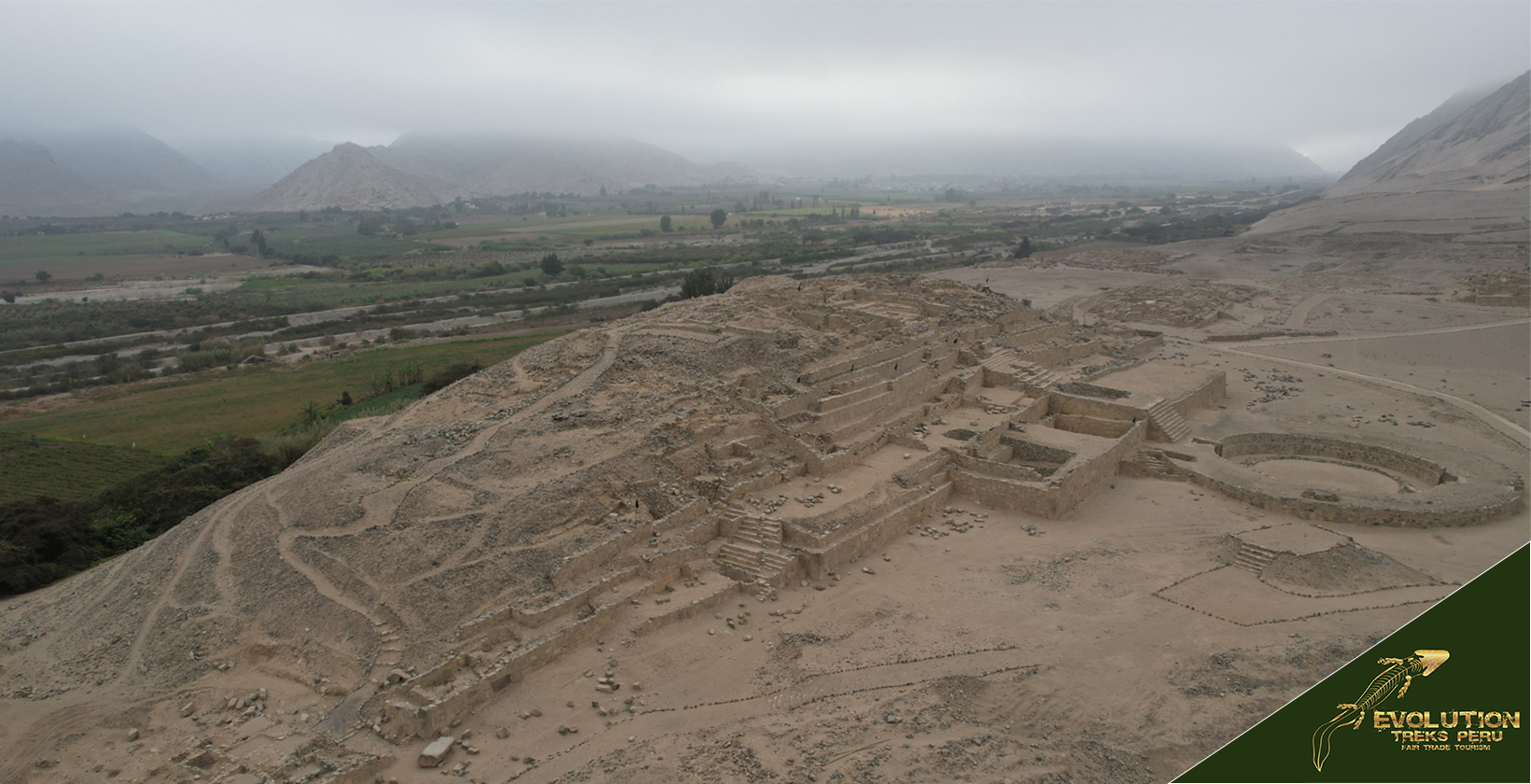
What are the artifacts discovered in the Sacred City of Caral?
In relation to the artifacts discovered in the Sacred City of Caral, this society did not use ceramics in their daily life. They only created small clay statues for rituals. Their utensils were made of wood and stone.
Another curious detail is that no remains of weapons or objects related to the army have been found. This suggests that Caral was a completely peaceful society. However, with power and influence over nearby towns such as Miraya and Kotosh.
When compared to common Eurasian models of civilization development, the differences between the Caral and Norte Chico Civilization are remarkable. The total lack of pottery persists even in its peak period.
The BBC notes that the inhabitants of Norte Chico would have roasted their various crops without pots to boil them. The lack of pottery was accompanied by a lack of art.
In the Norte Chico, we see almost no visual arts. There is no sculpture, no carving or bas-relief, and almost no painting or drawing; the interiors are completely bare. What we do see are those huge mounds and textiles.
Caral Culture Textile Technology.
Basketry, vegetable fibers and shicras.
The Huanca monolith:
While the absence of ceramics seems anomalous, the presence of textiles is very striking. Quipus (or khipu), string-based recording devices, have been found at Caral, tentatively suggesting a writing system, or “proto-writing”, in the Norte Chico.
The Quipu of Caral.
The exact use of the quipu in this and later Andean cultures has been widely debated. It was originally believed to have been used to record numerical information, such as a tally of items bought and sold.
However, evidence has emerged that the quipu may also have recorded information in the same way as writing. That research has focused on a much larger sample of a few hundred quipus dating to Inca times; the Norte Chico discovery remains unique and undeciphered.
Other finds in the Norte Chico have been equally fascinating. While the visual arts seem to be absent, instrumental music may have been present: flutes, made of pelican bone, have been discovered.
Although still fragmentary, this archaeological evidence corresponds to the patterns of later Andean civilization and may indicate that the Norte Chico served as a social and cultural base for them. Along with specific finds, Caral researchers point to the primacy of exchange over a wide area, the inclination for collective and festive civic work projects, and the high valuation of textiles and textile technology” within the Norte Chico as patterns that would later be repeated in Peruvian Andean civilization.
Flutes found in the Sacred City of Caral.
When was it called the Sacred City of Caral?
In the late 1990s, Peruvian archaeologists, led by Ruth Shady, provided the first comprehensive documentation of the civilization with work at Caral. An article published in 2001 in the journal Science reviewing research at Caral, and another published in 2004 in Nature, describing fieldwork and radiocarbon dating over a wider area, revealed the full significance of Caral-Supe and aroused great interest.
Ruth Martha Shady Solís (born December 29, 1946, in Callao, Peru) is a Peruvian anthropologist and archaeologist, founder, and director of the Caral archaeological project.
He has worked at the site of Caral since 1994 and is credited with the discovery of Norte Chico, the earliest known civilization in the Americas, and one of the oldest in the world. Shady has named the civilization Caral, while the term Norte Chico has been adopted in English.
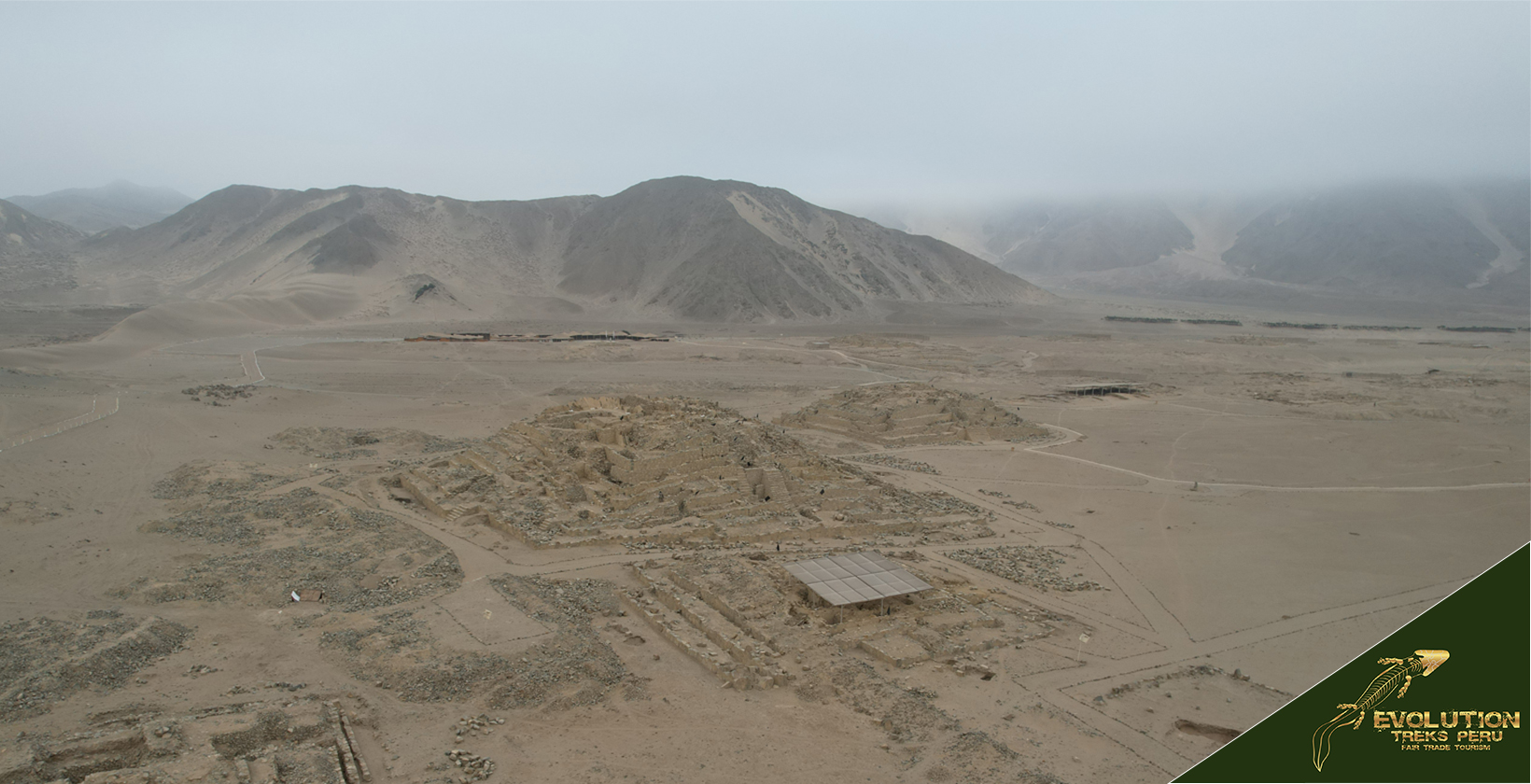
Which civilization used the Sacred City of Caral, and for what purpose?
The ancestral city of Caral is the origin of the Andean civilization. In it, the exchange of goods and services, the ceremonial calendar, temples, the use of quipus, and different goods and knowledge that were acquired by the Inca society were built and renewed.
Also, some utensils such as the quipu (knotted threads), which served to store statistical information and possibly as a writing system, were born in Caral and continued to be used in later Andean cities.
Finally, as for the form of government, in each settlement of the Caral culture, there was a Curaca. Like the Inca society, he was the lord or authority in charge of organizing the life of its inhabitants.
What are the theories about the origin of the Sacred City of Caral?
The origins of the Sacred City of Caral can be understood from this sequence of time and events:
Remote PeriodPeriod (3000 B.C.), groups of related families or lineages that inhabited the valley took collective possession of the territory. They established their dwellings in nucleated settlements, drained the wetlands, and set up their farmlands and irrigation canals. They built their houses with organic materials and erected discreet public buildings.
Ancient PeriodPeriod (3000 – 2600 B.C.) the urban settlements of the Capital Zone grew; the settlers prepared squares of open spaces for public functions; they built imposing buildings.
Early Middle Period (2600 – 2300 BC) restructured the overall design of the Sacred City of Caral, under a planned program of concerted axes: sunken circular plazas were annexed and buildings followed a single-facade pyramidal model. The state government was formed, which led to an enormous economic and labor force investment.
During the final Middle Period (2300 – 2200 B.C.), they enlarged in extension and volume the public buildings, and built great platforms and squares. There was a greater power of the State.
Early Late Period (2200 – 2100 B.C.) remodeled the public buildings with smaller stones; they buried some components and architectural elements of great significance. In the end, the occupation of the Sacred City of Caral, the place where the gods and ancestors dwelt, was reduced.
The sacred valley of Supe had lost prestige in front of Casma and Rimac by the incorporation of the civilized life of societies of the north coast and south coast, which applied and developed the organizational, scientific, and technological contributions of the mother culture of Caral-Supe.
What are the myths of the Sacred City of Caral?
The legend of the city that asked for help from the gods One possible explanation for why the Norte Chico settlements were abandoned 3,800 years ago comes from research conducted at the site called Vichama. Shortly before abandoning their home, the inhabitants carved snakes and human heads on their walls, along with representations of emaciated people. Archaeologists believe that these elements signify that the people who lived in the settlement were starving and dying and hoped that a water deity would finally be indulgent and send them some rain so that their friends, relatives, and neighbors could survive.
It has also been suggested that the carvings on the walls show that the inhabitants of Vichama wanted to show others the hardships they faced when rainfall was scarce. More interestingly, if the results of research at the site are correct, the inhabitants of Vichama survived climate change, unlike those of the Norte Chico – Caral core.
Is the Sacred City of Caral important for the history of Peru?
The Sacred City of Caral is important for the history of Peru. It is attributed to an antiquity of 5000 years and is considered the oldest in America and one of the oldest in the world. It has been declared Cultural Patrimony of Humanity by Unesco.
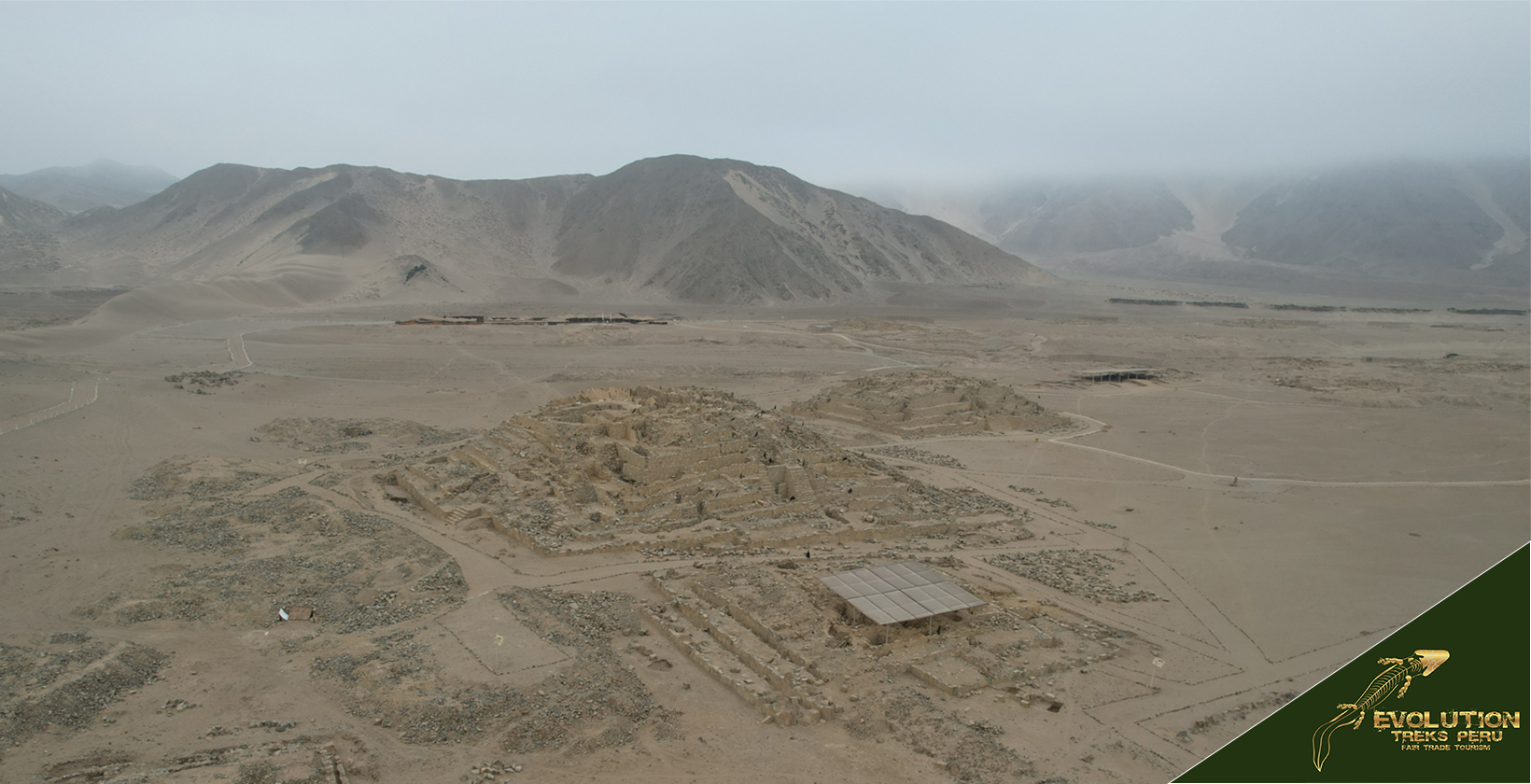
Where is the Sacred City of Caral located?
The Sacred City of Caral is located in the district of Supe, in the province of Barranca, north of Lima, at kilometer 184 of the Pan-American Highway North, in the North Central Area of Peru.
What are the coordinates of the Sacred City of Caral?
The coordinates of the Sacred City of Caral are as follows:
Coordinates
10°53′37″ S, 77°31′13″ W
In decimal
-10.893611°, -77.520278°
UTM
8794638 224494 18L
How did the Sacred City of Caral become known?
The Sacred City of Caral became known since the important discoveries made there in the mid-1990s, for the dense concentration of archaeological sites with monumental architecture; these dates back to the third millennium B.C., the oldest known in the western hemisphere.
In the late 1990s, Peruvian archaeologists led by Ruth Shady provided the first comprehensive documentation of the Norte Chico civilization and the work at the Sacred City of Caral.
Shady has worked at the Caral site since 1994 and is credited with the discovery of Norte Chico, the earliest known civilization in the Americas and one of the oldest in the world. She has baptized the civilization with the name Caral, while the term Norte Chico has been adopted in English.
In 2001, Dr. Shady and other researchers published radiocarbon dates from the Caral site in the Supe Valley, indicating that monumental corporate architecture, urban settlements, and irrigated agriculture began in the Americas between 4090 years before the present (2627 years B.C.) and 3640 years before present (1977 calibrated years B.C.).
What is there to see in the Sacred City of Caral?
Among the most important places to see and visit in the Sacred City of Caral, we can recommend the following:
The Central Pyramid: one of the tallest buildings in the Sacred City whose facade is oriented to the east, to the sunrise. Formed by a pyramidal structure presided over by platforms that expanded over time. It is inferred, by its location and dimensions, that it was a public building of great hierarchy.
The Pyramid of the Quarry: a building built on a promontory
natural rock, used as a quarry in the Ancient Period; the façade was oriented towards the Great Pyramid. On the south and west sides, residential complexes are linked to the group conducting this structure’s activities.
The Great Pyramid is the architectural complex of greater extension and volume of the city, oriented towards the south, with its back to the valley. Because of its size and association with a circular plaza, it must have been the main public building of the Sacred City.
The Amphitheater Temple: In the southwest part of this round plaza, a group of flutes could be recovered. This temple is fortified where this city’s largest sunken round plaza is denoted.
The altar of the sacred fire is a small room with a roof used for ritual purposes. The inner part shows a fire pit and a red-colored cloak.
Craft Specialization Workshop: located at the eastern end of the lower half of the city. It consists of three large quadrangular enclosures. Small hollows sealed with a layer of clay were found on the floors, containing chrysocolla, milky quartz, and rock crystal beads. Carving debris and stone and bone tools were found next to them. Archaeological evidence indicates that these enclosures were used as craft production workshops for the supply of sumptuary items.
Residential complexes: these were elaborated with organic walls and many stone walls. The walls looked well painted.
What is the map of the Sacred City of Caral like?
The map of the Sacred City of Caral shows its location on the Peruvian coast and the most important sites to visit.
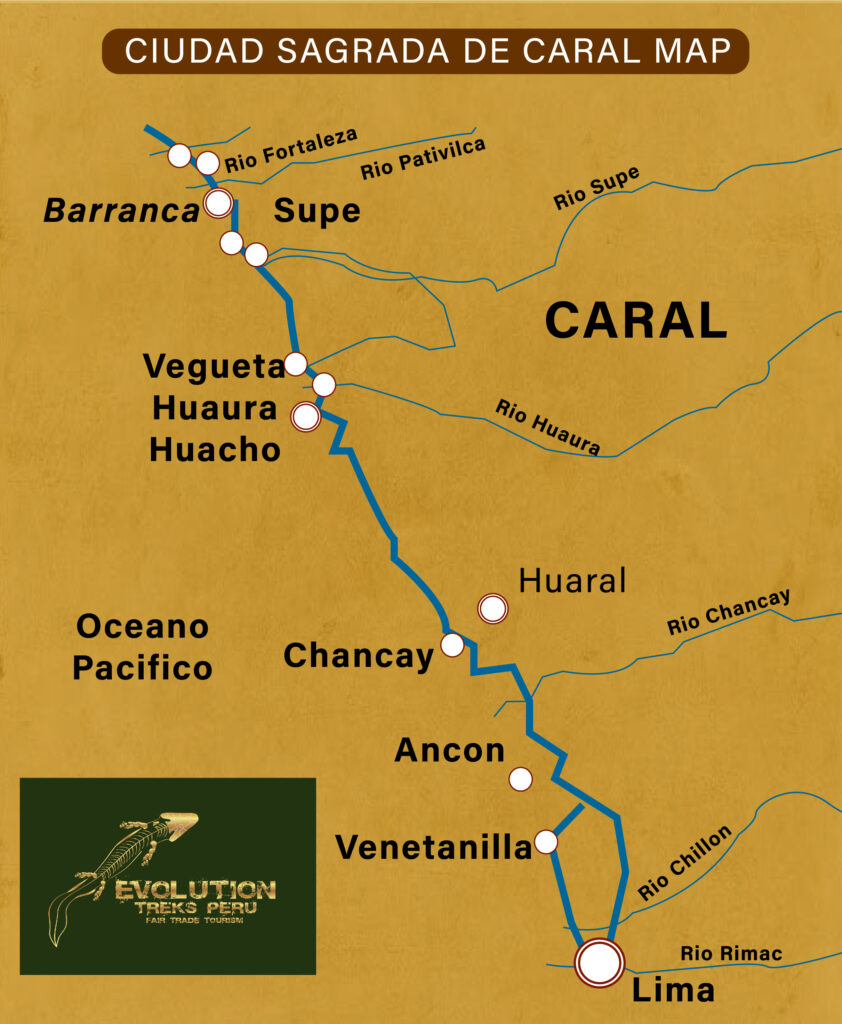
What is the geography of the Sacred City of Caral like?
In geographic terms, the Sacred City of Caral is located on the left bank of the Supe River, at an altitude of 350 meters above sea level, near the current town of Caral, on the north-central coast of Peru, in the district of Supe, province of Barranca and department of Lima. Caral occupies 66 hectares and is organized in a nuclear zone, which contains thirty-two public structures, several residential complexes, and a peripheral zone bordering the Supe valley. Here dwellings were built as well as pyramids. In the nuclear space, the buildings were distributed in two large halves: Caral Alto on the north side, and Caral Bajo, on the south.
In the North Central area of Peru, the social conditions were propitious for the formation of the civilization stage, both in the populations of the coast and in those of the highlands and the Andean jungle.
The traditional interregional connection between the inhabitants of this area made it possible to take advantage of the production and experiences achieved by the societies of the different regions in one of the most diversified territories on the planet. The interchange boosted scientific and technological progress.
Interconnected Valleys.
The nine valleys of the western slope of the North Central area are geographically connected through the high Andean plateau where their respective rivers originate. The same plateau also links them to the Callejón de Huaylas and, to the east, to the Marañón and Huallaga rivers, gateways to the Amazon.
The Supe Valley and the 18 contemporary settlements.
The 18 settlements of Supe coeval to Caral vary in extension, number, size, and complexity of their architectural components. They share characteristics in the type and design of the constructions: all the settlements had at least one public building, and a sunken circular plaza is recurrent, in association with a pyramidal structure and residential complexes.
Central Zone of Caral.
In the lower middle valley area, the greatest number of settlements is concentrated, 7 out of a total of 18.
This area is enclosed by the mountain range’s morphological configuration, making it a controllable space.
The Supe River
In January through April, the rainy season in the highlands, the river fills its channel until it leaves the settlements on both sides of the valley without connection. During the summer months in the highlands, the waters of the Supe River were replaced by springs or puquios, and the irrigation canals continued to distribute copious amounts of water to the fields.
What is the geological profile of the Sacred City of Caral?
Regarding the geology of the Sacred City of Caral, it should be noted that it was built with stones, which gave monumentality to its pyramids, enclosures, and dwellings. The size of the stones varies from a few centimeters to several meters long, and many of them weigh several tons. Some of the quarries from which these materials were extracted were located in and around Caral.
Caral and its surroundings have recognized three regional geomorphological units: the Supe river valley, the hills, and the transversal ravines. Caral is located between the Supe river valley and the fluvial-alluvial plain of the Chupacigarro gorge. The geological units exposed in the area are mainly made up of dioritic intrusive rocks of the Coastal Batholith and andesitic volcanic rocks of the Casma Group, both of Cretaceous age.
The fractures and diaclases that affect the volcanic rocks and mainly the intrusive rocks, have been used by the builders of Caral to extract the stones from the quarries and use them in the construction of the city. Quaternary deposits are important and include fluvial, alluvial, lacustrine and eolian deposits. Fluvial terraces are found along the Supe River, and its banks and are made up of gravel and sand deposits. Three fluvial terraces have been identified.
One of the morphological features that stands out in Caral is the presence of a dune with a NE-SW direction located transversally to the Chupacigarro ravine. This dune -located south of the city- is approximately 600 m long and varies between 20 and 30 m in height. The dune is the southern limit of the Sacred City of Caral. It is made up of sand transported and deposited by the wind. This aeolian geo form is longitudinal and covers the entire width of the Chupacigarro gorge as a containment dike.
In the Chupacigarro creek and only south of the dune, clays of lacustrine origin have been identified, intercalated with layers of fine eolian sands. The presence of these lacustrine deposits could be due to the fact that the dune would have acted as a barrier, although mechanically, it is difficult to explain since the eolian sand is not compact and would hardly resist the pressure of a relatively important accumulation of water. During the study, it was hypothesized that there would have been an artificial barrier or dike that was covered by the dune.
It is likely that under the dune, there are man-made structures that acted as dikes or dams, possibly to contain debris flows such as those that had previously affected Caral, but these rather allowed the formation of the lagoon. Over time, this wall was gradually covered by eolian sands until it formed a true dune.
The experience lived by the settlers may have led to the decision to build a protective wall to the south of the city. This wall would have been built around 4,500 to 4,300 years ago to protect the city from the floods or landslides that affected it during the rainy season, probably related to periods when the El Niño Phenomenon occurred.
This wall dammed the rainwater forming a lagoon. Consequently, the lagoon is from the same period as the wall, during the splendor of Caral, and is related to periods of heavy rains that managed to fill the lagoon. Later, during the occupation of the city, there was a new alluvium that destroyed part of the dune in the northeast sector and, consequently, the wall, which was possibly partially rebuilt.
The Sacred City of Caral was built with stones, and here we can see the origin of what 4000 years later were the monumental constructions of Machupicchu, Choquequirao, or Saqsaywaman. The diorite was the most used rock, constituting a good material for its composition and structure (cut by fractures), which allowed a natural and artificial separation in parallelepiped blocks of various sizes.
The polishing of the rocks was carried out both in the quarries and in the city itself after the transport of the rocks. However, many already had a natural polishing due to their natural fracturing. Field studies have allowed us to recognize several quarries located in the same city and in the surroundings, including those exploited in the Chupacigarro creek, the area of the Quarry Pyramid, and the area of dioritic chaos, in addition to the southwest and southeast quarries.
The minerals most commonly used in Caral for elaborating prestige objects such as beads and charms were: kaolin, chrysocolla, calcite, siderite, and rhodochrosite. These objects were recovered in pyramids and dwellings. Various instruments were used in their manufacture, such as hammers, smoothers, and drills made of rock and bone. The hematite was used to obtain reddish pigments to paint the walls of the houses and pyramidal buildings.
Two external geodynamic phenomena have been identified in the Sacred City of Caral: settlements and alluvium. The most important settlements have been recognized in a couple of Great Pyramid enclosures, affecting the walls. The causes of this settlement seem to be related to an important earthquake that affected the city, but the damage was local due to the good quality of the soil.
In Caral, four major alluvial events have been evidenced. The origin of these flows is possibly related to the El Niño phenomenon. Another similar phenomenon that would cause intense rainfall, greater than that of recent years, could affect the Sacred City of Caral; however, the probability of this phenomenon occurring is not high.
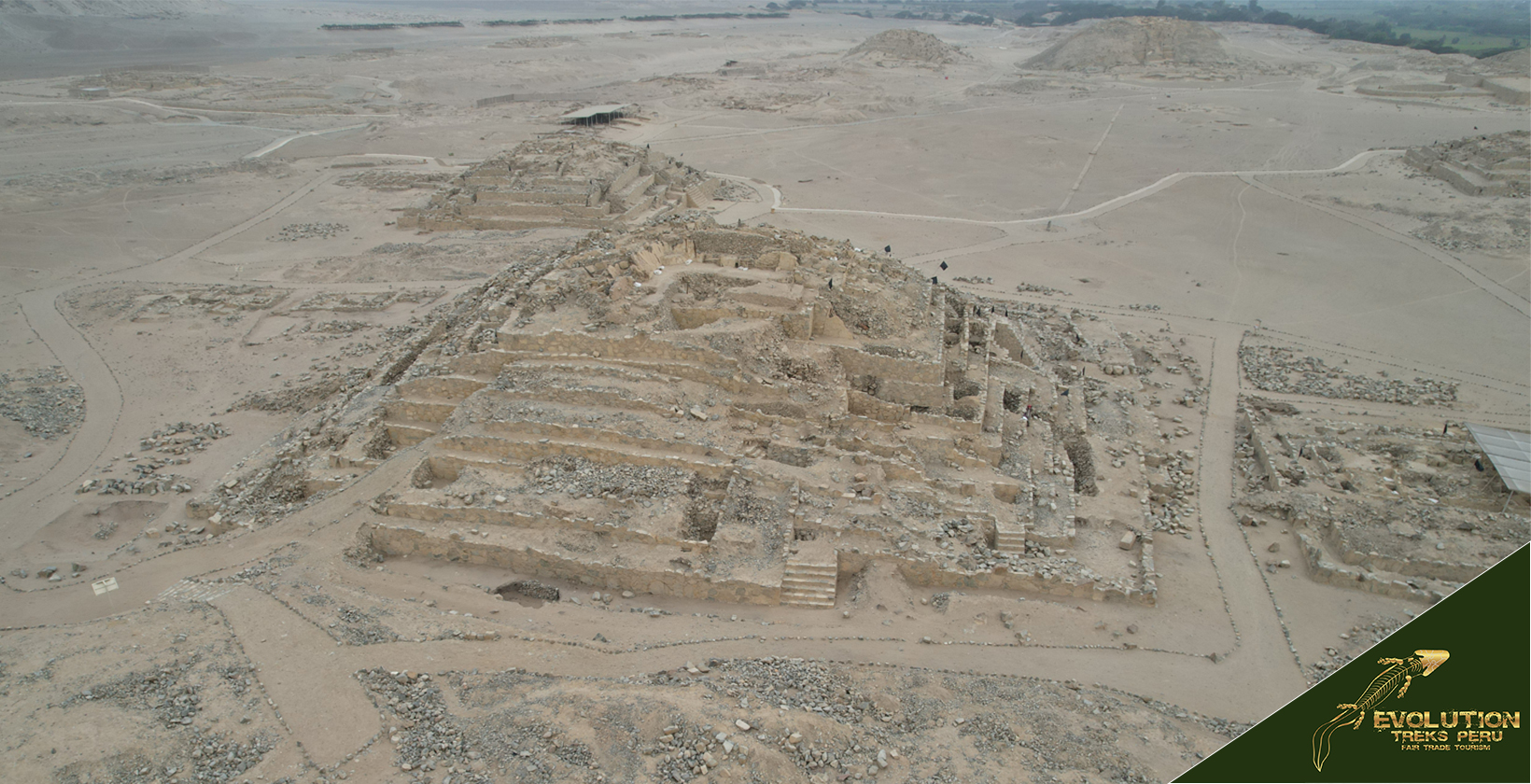
What are the hiking trails in the Sacred City of Caral?
In the surroundings of the Sacred City of Caral, you can practice several sports, among them trekking and cycling. Some tourist agencies offer bicycles that adapt to the terrain, and there are also specialized guides for this sport, but you can bring your own bicycle if you wish.
Avoid hiking during the January – March season since it is the hottest season on the Peruvian coast. This will allow you to walk and enjoy the tour much more.
Here we present these routes and some other opportunities you can take advantage of for your visit to Caral.
One route starts from Huacho to Huaura, through the route called “Ruta de las Chacras”, parallel to the Pan-American Highway North. The arrival point is the town of Vegueta, and from there, the road to the entrance of Caral. This road is sandy and extends for almost 23 kilometers.
This route takes five hours by bicycle to reach the ruins of the Sacred City. It is optional to be in excellent physical condition for the journey. The altitude is only 350 meters above sea level.
Another route is Supe – Caral. You take a collective cab from Supe, arriving at the entrance of the archaeological complex on the bridge that crosses the Supe River. The route is 32.13 kilometers long, of easy difficulty, and has a maximum altitude of 423 meters (minimum 42 meters).
The visit to the Sacred City lasts about an hour and a half, and then, you can go up to a viewpoint where you can see the whole place. The return to Supe is done similarly by collective cab.
Another alternative is “Vichama Tours.” This agency uses vehicles with capacity according to the number of participants enrolled in the trekking. They will be taken from Lima or Huacho to the town of Medio Mundo, where the event will begin.
After the trekking and the visit to the Sacred City of Caral, they will be picked up by the vehicle to be taken on a tour of the tourist sites in the province of Huacho and, depending on the package, they can be taken to the city of Lima. An experienced guide with the ability to decide new routes to take the group to a place of support or shelter in case of emergency is offered to the participant to make this trekking.
Norte Chico Tours has the offer to visit the Sacred City of Caral with a 4.3 kilometers hike of low difficulty. TOUR TO CARAL from S/125 Soles 1 DAY – THE BEST PRICE | NORTH CHICO TOURIST PACKAGE 1 DAY Lima Peru – Ahora Barranca – Hotels, Destinations, and Tourist Packages. WINE AND PISCO TOUR IN NORTE CHICO PARAMONGA PATIVILCA BARRANCA SUPE HUACHO HUARAL HUAURA CHANCAY LIMA (nortechicotours.com)
It is good to take into account that the Peruvian government encourages and authorizes camps during the Holy Week season, in which, if you are interested in participating, you should register in advance since the quotas are quickly exhausted.
What is the best time to visit the Sacred City of Caral?
The best time to visit the Sacred City of Caral is from April to December. Although the weather is warm throughout the year, during these months the heat drops a little, so the journey will be easier and more manageable. It is advisable to bring light clothing and a windbreaker.
Where to stay during your visit to the Sacred City?
There are several lodging offers if you wish to stay near the Sacred City of Caral. Prices vary according to the site and services. There are shelters for tourists from 20 soles and, according to the opinions collected from the travelers themselves in different portals, these are some of the most recommended places:
In Huacho: Hotel Centenario (between 80 and 100 soles), Hotel Pacífico (between 70 and 90 soles), and Las Terrazas (50 soles), all three located on Av. 28 de Julio. Other recommended hotels, such as Hotel Casablanca, La Gran Villa, and El Condado.
In Supe: Here, the most famous hotel is La Casa de Isidora, a large house built in 1925 that offers tours for travelers.
In Barranca: If you want an ocean view, the recommended hotels are Chorrillos Beach (between 60 and 80 soles), Hostal Casa Blanca (50 and 80 soles), and Dasso Inn (50 and 70 soles).
These prices should be taken as a reference because, during the last year, there have been constant changes in the dollar’s exchange rate.
The U.S. dollar is currently quoted at 1 x 3.8 Peruvian soles (approximately).
If you have more time, take the opportunity to visit the surroundings of Caral: the town of Supe and other attractions such as the beaches of Huarmey (a few kilometers to the north) or La Gramita beach, in Casma.
In Barranca and Huacho, there are hospitals, police stations, and ATMs of several banks. Take the opportunity to withdraw the cash you need before route to Caral.
Finally, touring Caral will take only one day. Therefore, if you come from Lima (184 kilometers), you can return to the city and rest without any problem.
What are the main tours to visit the Sacred City of Caral?
Visiting Caral can also be done with tours and travel agencies. The prices can vary from 400 to private excursions with fewer people and chosen in advance. It all depends on the agency you hire.
One of the most recognized agencies is Caral Tours.
Home – Caral Tours Travel Service SAC – Incoming Tour Operator in Peru
To promote tourism in the Norte Chico region, the province of Barranca, the Peruvian Ministry of Transportation and Communications awarded it the international “SafeTravels” seal as a safe tourist site for all travelers interested in visiting the Sacred City of Caral.
The tourist route of the Caral – Barranca destination includes the following places: Sacred City of Caral (Supe district), Supe Community Museum (Supe district), Isla de Faraón beach (Supe Puerto), Barranca main square (Barranca district), Chorrillos beach (Barranca district), Miraflores beach (Barranca district), Puerto Chico beach (Barranca district), Colorado beach (Barranca district), Bolivarian Museum of Pativilca (Pativilca district).
As for private tours, the following alternatives are available.
Norte Chico Tours:
TOURS TO CARAL | TURISMO 3i | TURISMO INCLUSIVO | SUPE BARRANCA NORTE CHICO LIMA PERU Lima Peru – Ahora Barranca – Hotels, Destinations and Tourist Packages. WINE AND PISCO TOUR IN NORTE CHICO PARAMONGA PATIVILCA BARRANCA SUPE HUACHO HUARAL HUAURA CHANCAY LIMA
Tour operator located in Barranca.
It offers the following services:
- Transfers Lima/Barranca/Lima
- Entrance fees to archaeological sites
- Full-Time Guide
- Tour of the best circuits
- Visit the interpretation centers
- Curiosities of the area
- Talks and photo sessions
- Waiting for breakfast and lunch
- Regular Service or Private Service
Vista Aventura Daysi Tour:
Vista Adventures Day Tours | GetYourGuide Provider
Duration 11 hours.
Includes lunch and skip-the-line entrance to Caral.
Guide in Spanish, English, or Portuguese.
Pick-up service in Lima.
Wheelchair accessible.
Return to Lima at 5:30 pm.
Investment: from $225 per person.

What are the closest destinations to the Sacred City of Caral?
Among the closest destinations to the Sacred City of Caral, we consider the following:
Áspero Archaeological Site
Just 30 minutes away from Caral, there is another archaeological site with a history that is being revealed little by little. The district of Supe Puerto hides Áspero, the fishing city of the Caral civilization. It stands out for its marine production and fishing technology.
This destination contains an interpretation center, where infographics, models, and objects found in this city are presented. The tour, approximately 1 hour, has the supervision of tour guides who explain the monuments found, in addition to the great views that has towards the Pacific Ocean.
Bolivarian Museum
Located at kilometer 204 of the Pan-American Highway North, in the district of Pativilca, this site welcomed the liberator Simón Bolívar during the summer of 1824, and the peaceful atmosphere helped him recover his health.
During his stay in this building, which became his headquarters, the liberator organized his army to sustain the battles of Junin and Ayacucho that sealed the independence of Peru and South America. Today, this mansion is used as a museum and exhibits articles and documents from that period.
Paramonga Fortress
Paramonga is one of the five districts of the province of Barranca, located on the border with Ancash. The trip from Barranca to Paramonga is approximately 20 minutes by car. Here you can visit attractions such as the Paramonga Fortress, a construction from the time of the Chimu culture, also used by the Incas.
This interesting place can be visited from Monday to Sunday from 10:00 am until 5:00 pm. The entrance fee for adults is S/ 5 soles, and the price for university students is S/ 1 soles.
La Isla Beach
This beach is a little remote, which is beneficial for people interested in photographing the fauna and landscapes in this place.
The beauty of Barranca’s coastline can also be appreciated in the beaches of Atarraya, Carabela, Caleta Vidal, Chorrillos, El Amor, El Colorado, Lampay, La Viuda, Miraflores, Punta del Áspero, Punta Supe, Puerto Chico, among others. In fact, Barranca has been the scene of several sports championships, such as surfing.
How to get from Lima to the Sacred City of Caral?
To get to the Sacred City of Caral from Lima, you can take one of the following routes:
ROUTE 1: (Turn off at Km 184, and you will see some panels that will guide you). After traveling approximately 23 kilometers, you will arrive at the Caral Town Center and follow the detour to the tourist stop until the pedestrian bridge; from there, you will have to walk approximately 20 minutes to the reception.
BY PUBLIC TRANSPORTATION: Take a bus heading north until you reach Supe Pueblo, which is located at kilometer 184 of the Pan-American Highway North. You must get off at the Super Market. One block away is the cab and bus stop for cabs and buses that go to the town.
Go to the pedestrian entrance of the archaeological site, from where a marked pedestrian route starts. The approximate walking time is 20 minutes.
What to know before going to the Sacred City of Caral?
The following recommendations should be taken into account before traveling to the Sacred City of Caral.
- Wear comfortable clothes and shoes.
- Sunglasses
- Sunscreen
- A hat
- A bottle with plenty of water
- A photographic camera
- There are COVID controls
Since the reopening of the archaeological sites, the Caral Archaeological Zone has implemented several biosecurity measures to protect the health of visitors and employees.
In this sense, it is requested to respect the physical distance, the constant use of masks, the constant disinfection of hands, and to respect the indications of the guides.

How is the tour in the Sacred City of Caral?
During the tour of the archaeological site of the Sacred City of Caral, visitors will be able to appreciate the urban center, built on the left bank of the Supe River, in the so-called Capital Zone of the Caral Civilization; they will also learn about the work carried out by the professional and technical staff of the Caral Archaeological Zone in the areas of excavation, research, conservation, and enhancement.
They will also be able to visit the Interpretation Center and the museographic exhibition “Tunnel of Science: Caral, 5000 years of knowledge production in Science and Technology”.
How much does it cost to visit the Sacred City of Caral?
Come to the archaeological site, located at kilometer 184 of the Pan-American Highway North, Supe Valley, Barranca. Identify yourself to confirm that you are on the visitor’s list and pay your entrance fee in cash at the ticket office, according to the following rates:
1. Adults in general: 11 soles.
2. Students of higher education, university, and non-university: 4 soles.
3. School children from kindergarten, elementary and high school, and children up to 12 years old: 1 sol.
4. People over 60 years old, in voluntary military service, disabled, and teachers: 5.50 soles.
5. Higher education students, university and non-university, with disabilities: 2 soles.
6. School children in kindergarten, elementary and high school, and children up to 12 years of age, with disabilities: 0.50 soles.
7. The local population, inhabitants of the villages of the Supe valley: free admission.
8. A local tour guide does the tour of the visitor’s circuit. The cost for this service is 20 soles per group of 9 people.
It is recommended to enter the Sacred City of Caral 20 minutes before the reserved time for the visit.
Remember that you can only visit the Sacred City of Caral if you have the confirmation of your entrance reservation.
If you have any questions, please write to
The visit to the Sacred City of Caral is from Monday to Saturday from 10:00 am to 4:00 pm. If required, there is also a tour circuit for people with motor disabilities.
The Caral Archaeological Zone has adapted the visits based on safety guidelines and a sanitary protocol to guarantee the safety of visitors to the archaeological sites it manages.
The entity reserves the right to remove any person who does not respect this protocol and the visiting regulations.
1. Reserve your ticket
Reserve your ticket online by filling out the following form.
Visit the urban centers of the Caral Civilization. VISIT RESERVATION REQUEST (google.com)
It is recommended to send the request at least three working days in advance. This will allow the entity to grant you one of the available tickets for the day you indicate and to take precautions of capacity and avoid crowds.
You will receive a message confirming the date of your visit.
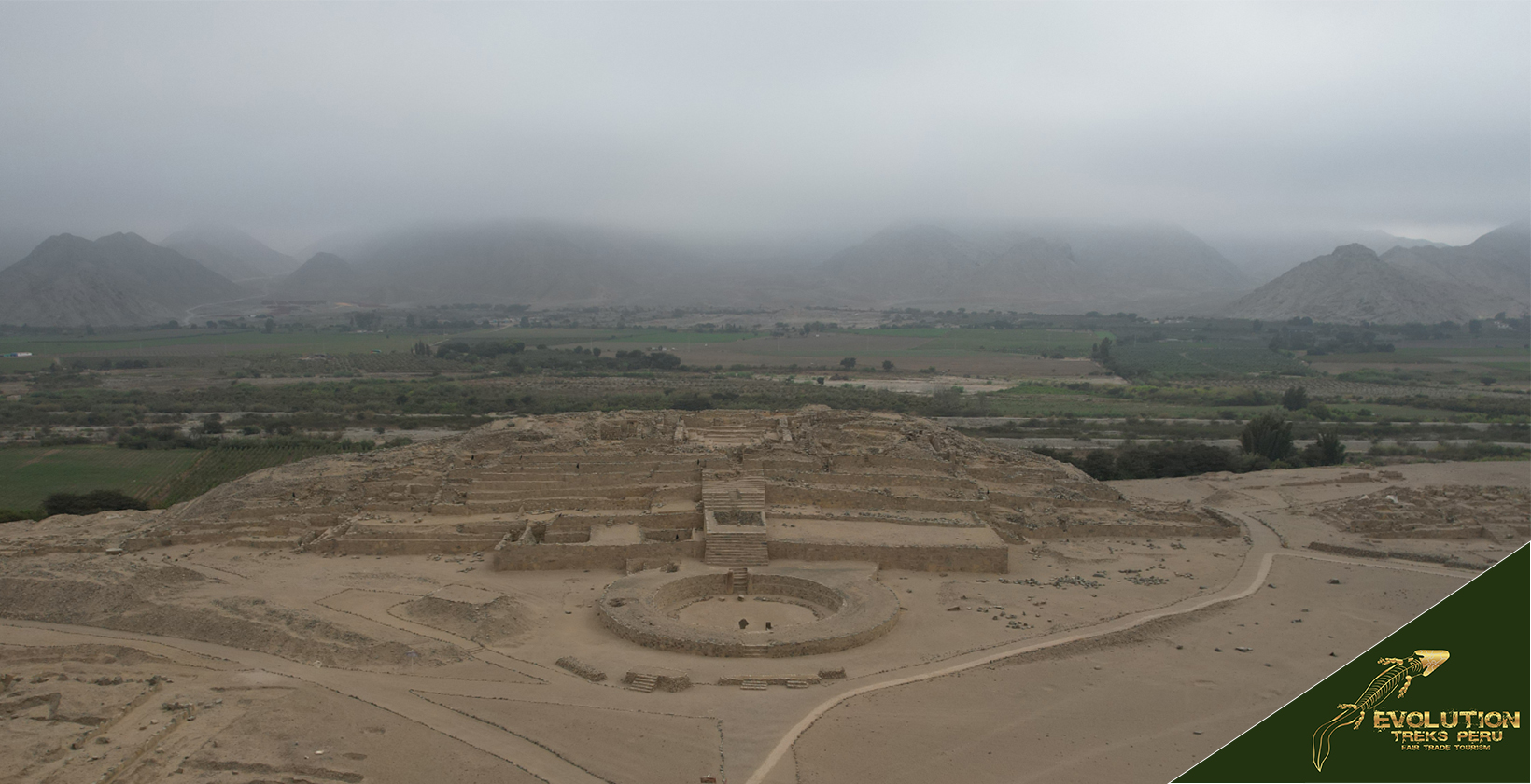
What is the best vehicle to visit the Sacred City of Caral?
As the best alternative to visit the Sacred City of Caral, you can go in a private vehicle or by public transportation. Of course, according to the option that offers the best facilities or comfort for your trip.
The routes to visit the Sacred City of Caral are as follows.
From Lima:
Super route: leave Lima on the Pan-American Highway North towards Huacho (143 km, approximately 2h15), pass Huacho, and continue until just before Supe (km 184 of the Pan-American Highway North, about 3 km before Supe, 1.5 km after the Supe river bridge). Follow the detour on the left bank of the river for 19 km. At about 4 km, you arrive at the parking area after crossing part of the archeological site.
Caral detour route:
leave Lima on the Pan-American Highway North in the direction of Huacho (143 km, approximately 2h15), pass Huacho and continue until the Vegueta detour (km 159 of the Pan-American Highway North, about 7 km before leaving Huacho). Take the Caral turnoff to the right and follow the trail for about 22 km.
How to get there by public transportation:
How to get to Huaral by bus:
From Lima: between 1h15 and 1h30.
From Huacho: between 1h and 1h15.
How many hours should a person spend in the Sacred City of Caral?
The approximate tour time in the Sacred City of Caral is 1 hour and 30 minutes.
Some additional details to take into account:
- The Sacred City of Caral is open every day. Even on holidays.
- Opening hours: 9 am to 5 pm.
- Guided tours: yes.
- Language: Spanish.
- Guided tour: until 4 pm.
What is the closest city to the Sacred City of Caral?
Barranca is the closest city to the Caral. It is a port city on the central coast of Peru, the capital of the district and province of the same name in the department of Lima. It is located 175 km north of Lima. It is located 37 km – 51 miles from the Sacred City.
Other nearby cities:
Huacho: 37 km (by road)
Huaral: 109 km (by road)
Lima: 184 km (by road)
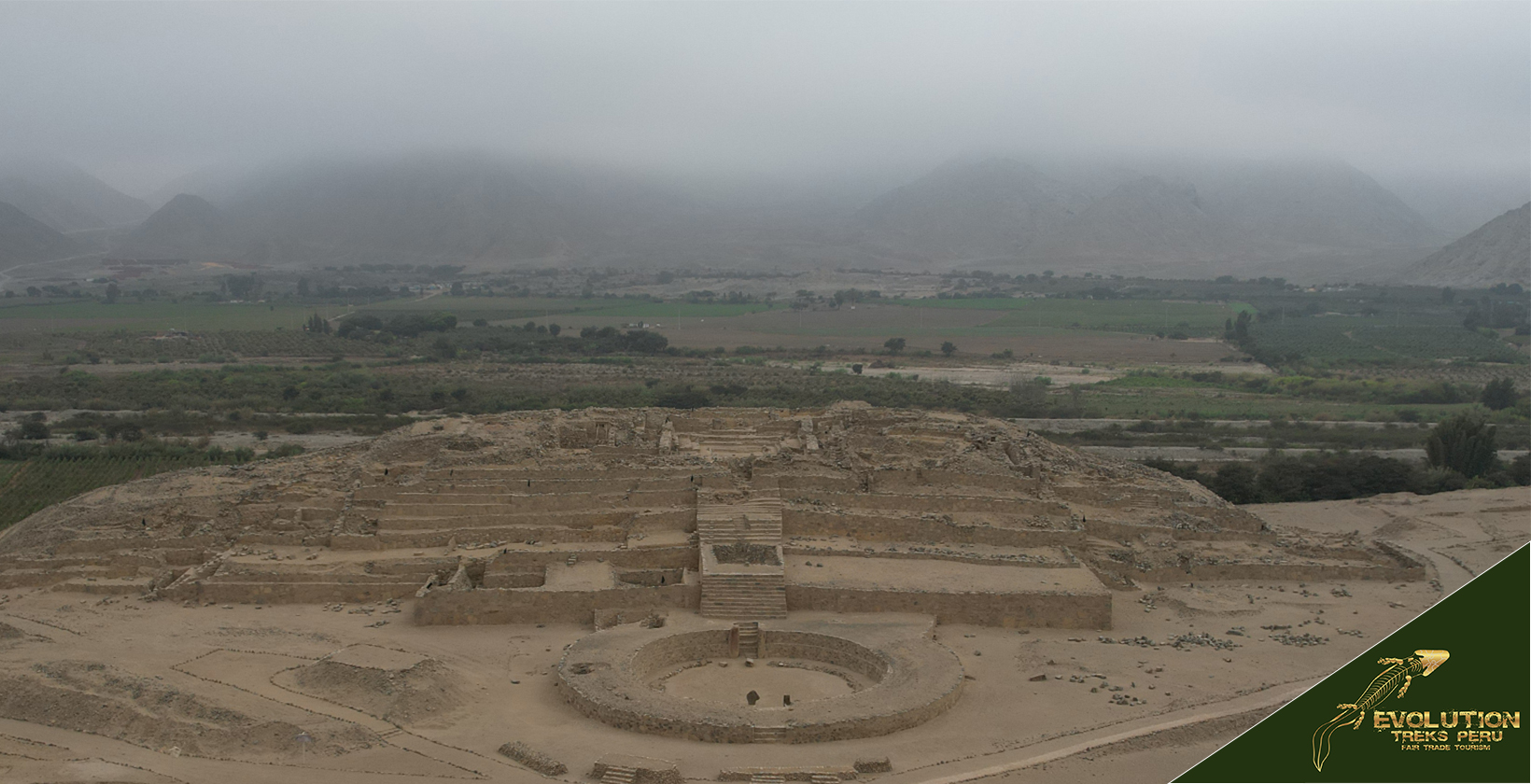
How is the past of the Sacred City of Caral presented to visitors?
The renowned National Geographic magazine comments in these positive terms about the sacred city of Caral.
One of the American continent’s most important yet little-known cultures is located in Peru. It is the Caral culture, whose capital was the city of the same name, now celebrating twenty-five years of excavations. We spoke with Dr. Ruth Shady, director of the Caral archaeological site, who told us many things about this site, located in the Supe valley on the north-central coast of Peru, a site that is, with its 66 hectares, one of the largest in the Americas, and about the civilization that built it, the Caral culture, considered the oldest in the Americas.
How is the conservation of the Sacred City of Caral?
Exceptionally well preserved, the Sacred City of Caral impresses with its design and the complexity of its architecture, especially its monumental stone and earth platforms and its sunken circular courtyards.
Caral remains remarkably intact, mainly due to its early abandonment by its original inhabitants and its late discovery. Once abandoned, it seems to have been occupied only on two occasions and not systematically: one in the so-called Middle Formative or Early Horizon, around 1000 BC, and another in the PeriodPeriod of States and Lordships, between 900 and 1440 AD. As both settlements were on the city’s outskirts, they did not alter the ancient architectural structures.
In addition, as the site lacked gold and silver finds, there was little looting. The site has no permanent modern constructions in its immediate surroundings (except for tourist facilities built with local materials). It is part of a cultural and natural landscape of great beauty, relatively untouched by development.
Is the Sacred City of Caral a UNESCO World Heritage Site?
The Sacred City of Caral was inscribed on the World Heritage List of the 1972 UNESCO Convention as a cultural property at the 33rd Session of the World Heritage Committee, held in Seville, Spain, on June 30, 2009.
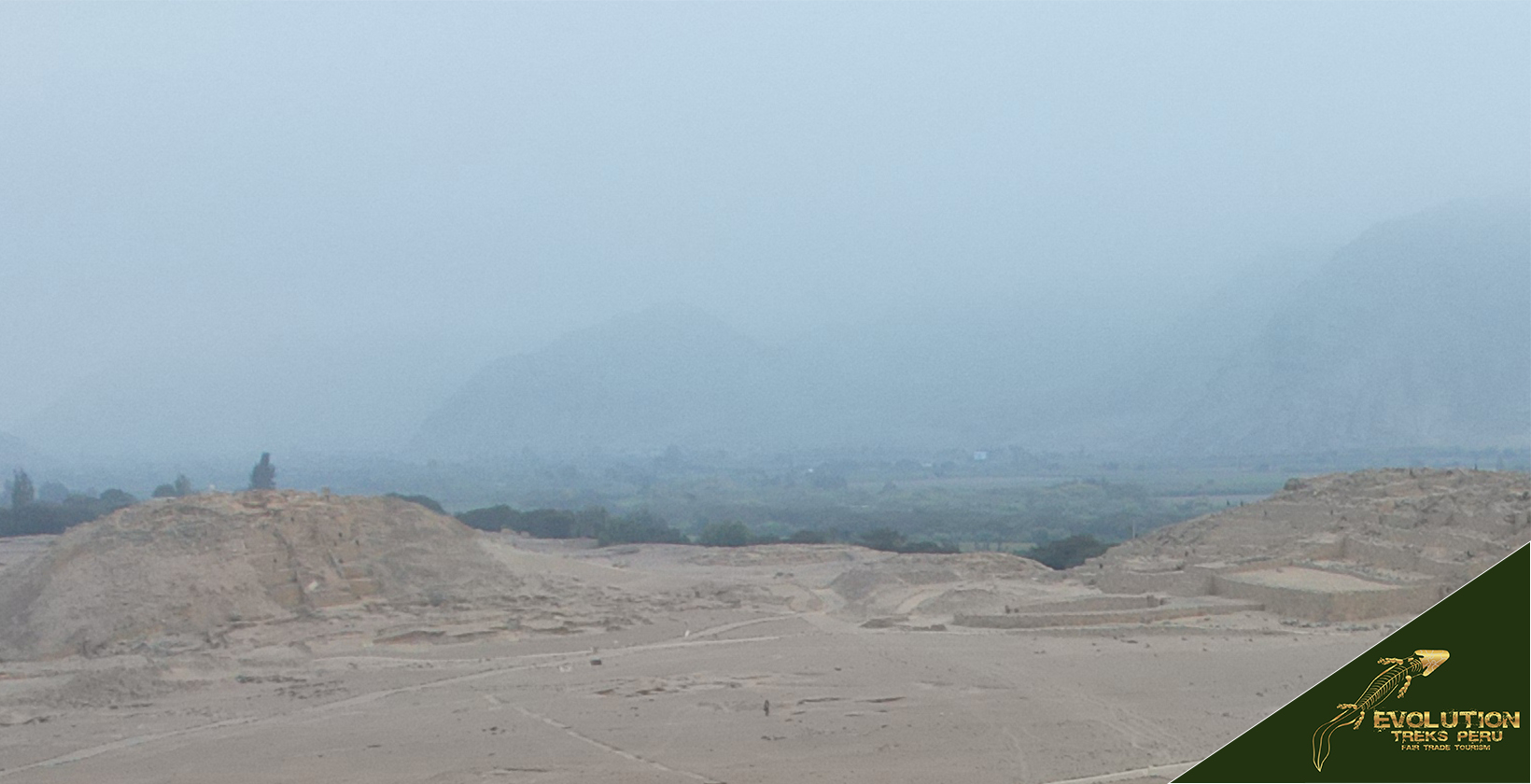
Is the Sacred City of Caral in Danger?
In Peru, the COVID – 19 pandemic hit its population hard, causing a serious economic affectation. This is what is alleged by the squatters settling in Caral to plant and cultivate, which worries archaeologists who for years have fought for its care and consider it a danger to the Sacred City of Caral.
This is great damage as 5,000-year-old cultural evidence is being destroyed.
The situation has become so serious that archaeologist Ruth Shady, discoverer of Caral, received a death threat.
According to archaeologists, the occupation has been going on since March 202, when restrictions due to the coronavirus halted visits to tourist sites because of the national closure of activities due to the COVID pandemic.
Rudy Shady claims that land traffickers, who occupy State or protected land illegally to sell it, are behind the invasions.
During the confinement, there was some looting of archaeological property in the area. In July, police arrested two people for partially destroying a site containing tombs with mummies and ceramics on Cerro Centinela.
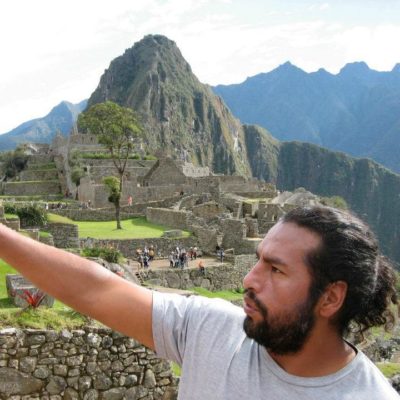
Miguel is a professional tour guide from Cusco, Peru, with almost 20 years of experience leading tours and a deep knowledge of Peru’s cultural and ecological diversity. He is also an advocate of ecotourism and cultural sensitivity and has lectured on these topics in the US and Europe. He co-founded Evolution Treks Peru, a worker-owned travel company based in Cusco.
